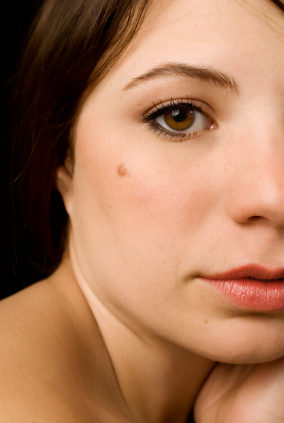Spots of birth defects or signs exist in various forms and colors, from brown, black discoloration, to pale pink, white, pink or deep purple. Some of them are superficial and are only epithelial cells from the skin, while others are deeply encysted in our tissues.
What causes birthmarks?
Local cause of these colorations is unknown yet for specialty physicians. Most are not transmitted genetically, so it is very difficult to specify what causes them. Of course there are a host of superstitions and misconceptions that revolve around this theme, but so far no such assumption has proven to have any connection with reality. Thus, there is now no explanation for the appearance of birthmarks.
It needs treatment?
Most stains do not require treatment. In some cases, the spots disappear while the years are passing, but there are people who require specialized medical attention due to location of signs. For example, such a birthmark which is near the eye, may come to interfere with the normal view. There are cases where birthmarks were responsible for the emergence of diseases such as growths in the liver, lungs, stomach or intestines.
Native types of signs
There are two main types of stains: red pigment. The tomatoes are highly vascularized, highly colored due to blood vessels of various sizes, and appear shortly after birth. The local color pigmented skin markings are present at birth. They can be brown or black, but colors can vary up to purple, pink, white and blue.
Types of pigmentation marks
– Mongolian spots – They are mostly blue and look like bruises. Often appear on the buttocks or behind the torso portion, but is possible to find them on the body or hands. These signs are more easily seen on people who have dark skin.
– Pigmented moles – Small skin growths, which have color similar with the skin, sometimes present in shades of brown or black, can appear anywhere on the skin, alone or in groups. They are formed from cells that fail to spread on the epithelial tissue and which are grouped. Moles thus obtained may enhance their color due to sun exposure during adolescence or during pregnancy)
– Congenital moles – They are present at birth and risk of turning into melanoma later. Moles defects shows a higher risk as their size is larger. All moles should be examined by a medical specialist and it should be consulted whenever any changes are observed in color or size of the mole.
– Signs of brown – The color of coffee with milk, have mostly oval or spherical shape. Usually appear at birth, but they may become visible in the near future. These spots are natural from birth, but if they presents as generalized, more than a quarter of the body surface, may be about neurofibromatosis – a genetic disorder responsible for the uncontrolled growth of nervous tissue cells.
How to diagnose birthmarks?
Most times it takes a doctor for an appointment. He can determine to what extent the risk for malignant moles is and to what extent it’s time to worry. If there is doubt, a biopsy is taken in order to determine accurately the subsequent treatment.
It varies depending on the manner in which the mole that threatens us affect the surrounding organs. If the only drawback is aesthetic, the mole can be removed surgically. It is good to know that any change in appearance (size, color, shape) of a mole should be taken seriously. Consult your doctor that you have noticed any change. Do not be too alarmed, because not every aspect change can be harmful!
